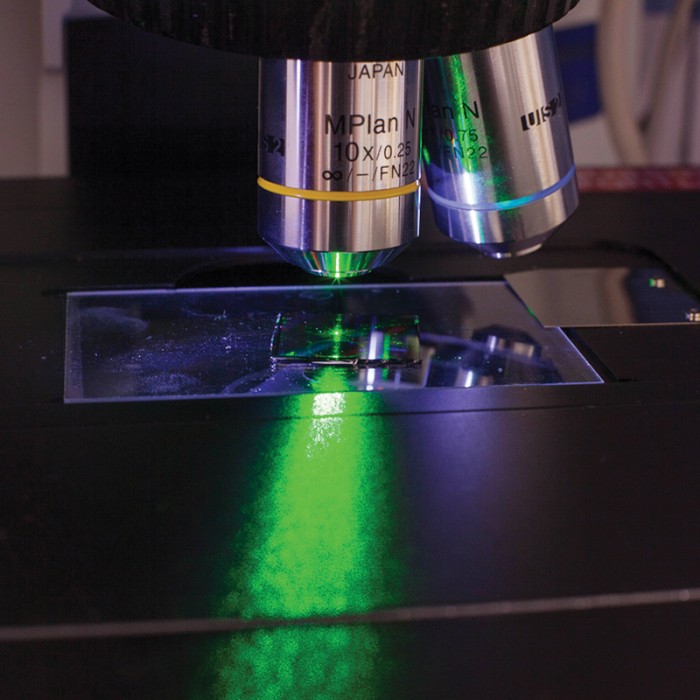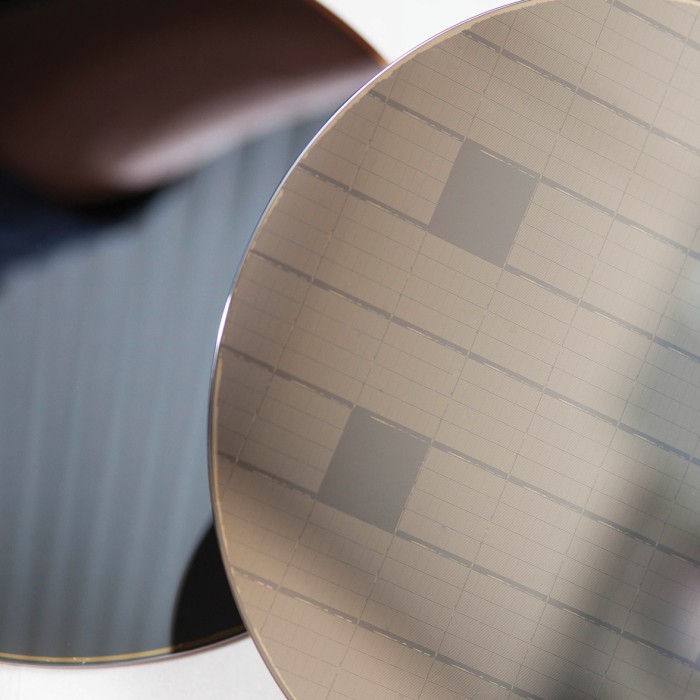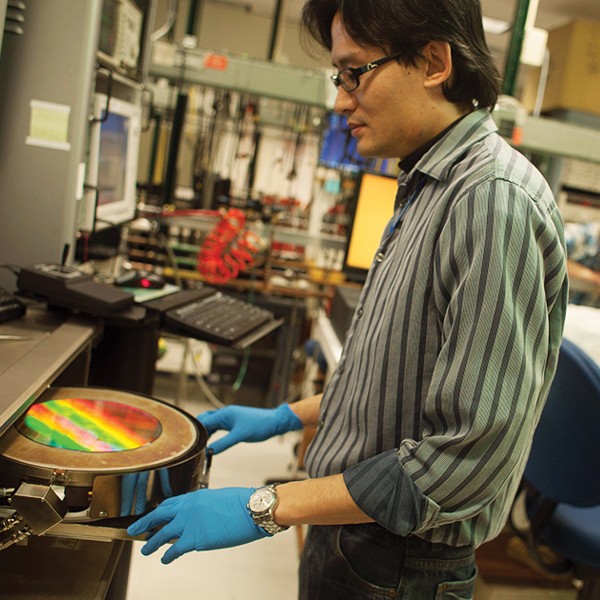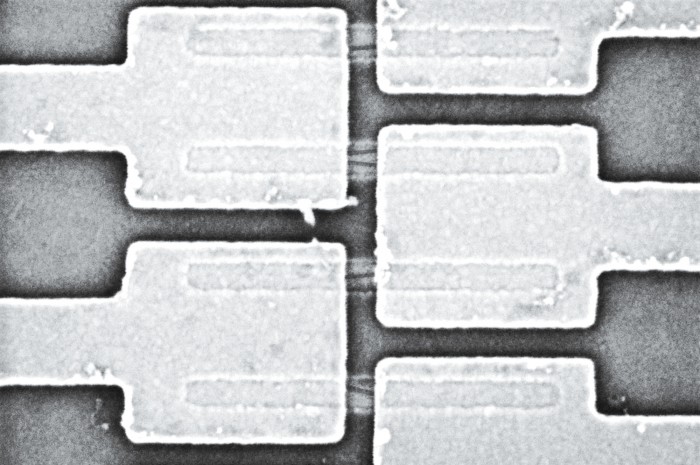How to Build a Nanotube Computer
Researchers at IBM have assembled 10,000 carbon nanotube transistors on a silicon chip. With silicon transistors approaching fundamental limits to continued miniaturization, the IBM work points toward a possible new way of continuing to produce smaller, faster, more efficient computers.


Earlier work by IBM showed that nanotube transistors could run chips three times faster than silicon transistors while using only a third as much power. And at just two nanometers in diameter, the nanotubes—carbon molecules resembling rolled-up chicken wire—are so small that chip makers could theoretically cram far more transistors on a chip than is possible with silicon technology. But controlling the nanotubes’ placement in arrays numerous enough to be useful—ultimately, billions of transistors—is a major research challenge.
At IBM’s T.J. Watson Research Center in Yorktown Heights, New York, researchers are etching tiny trenches on silicon and using a multistep process to precisely align semiconducting nanotubes in them. Then they add metal contacts to test the nanotubes’ performance. The company hopes that since the process uses a silicon substrate, it can eventually be inserted as a few extra steps within existing fabrication plants.






In the samples the researchers have created so far, the nanotube transistors are about 150 nanometers apart. They’ll have to get closer if the new technology is to beat today’s silicon transistors and keep ahead of improved generations over the next decade. “We need to lay down a single layer of carbon nanotubes spaced a few nanometers apart,” says Supratik Guha, director of physical sciences at the lab. His group must also work out how to add individual electrical contacts, envisioned as atomic-scale vertical posts, to each of billions of transistors; right now the wafer acts as the gate switching the nanotubes on and off. And finally, they must find ways to generate ultrapure supplies of semiconducting carbon nanotubes so that few, if any, will fail or short out. While achieving all this is likely to take five to 10 years, Guha says, “nanotubes are an excellent candidate to keep the scaling of microelectronics technology going.”

Keep Reading
Most Popular
Large language models can do jaw-dropping things. But nobody knows exactly why.
And that's a problem. Figuring it out is one of the biggest scientific puzzles of our time and a crucial step towards controlling more powerful future models.
How scientists traced a mysterious covid case back to six toilets
When wastewater surveillance turns into a hunt for a single infected individual, the ethics get tricky.
The problem with plug-in hybrids? Their drivers.
Plug-in hybrids are often sold as a transition to EVs, but new data from Europe shows we’re still underestimating the emissions they produce.
Stay connected
Get the latest updates from
MIT Technology Review
Discover special offers, top stories, upcoming events, and more.